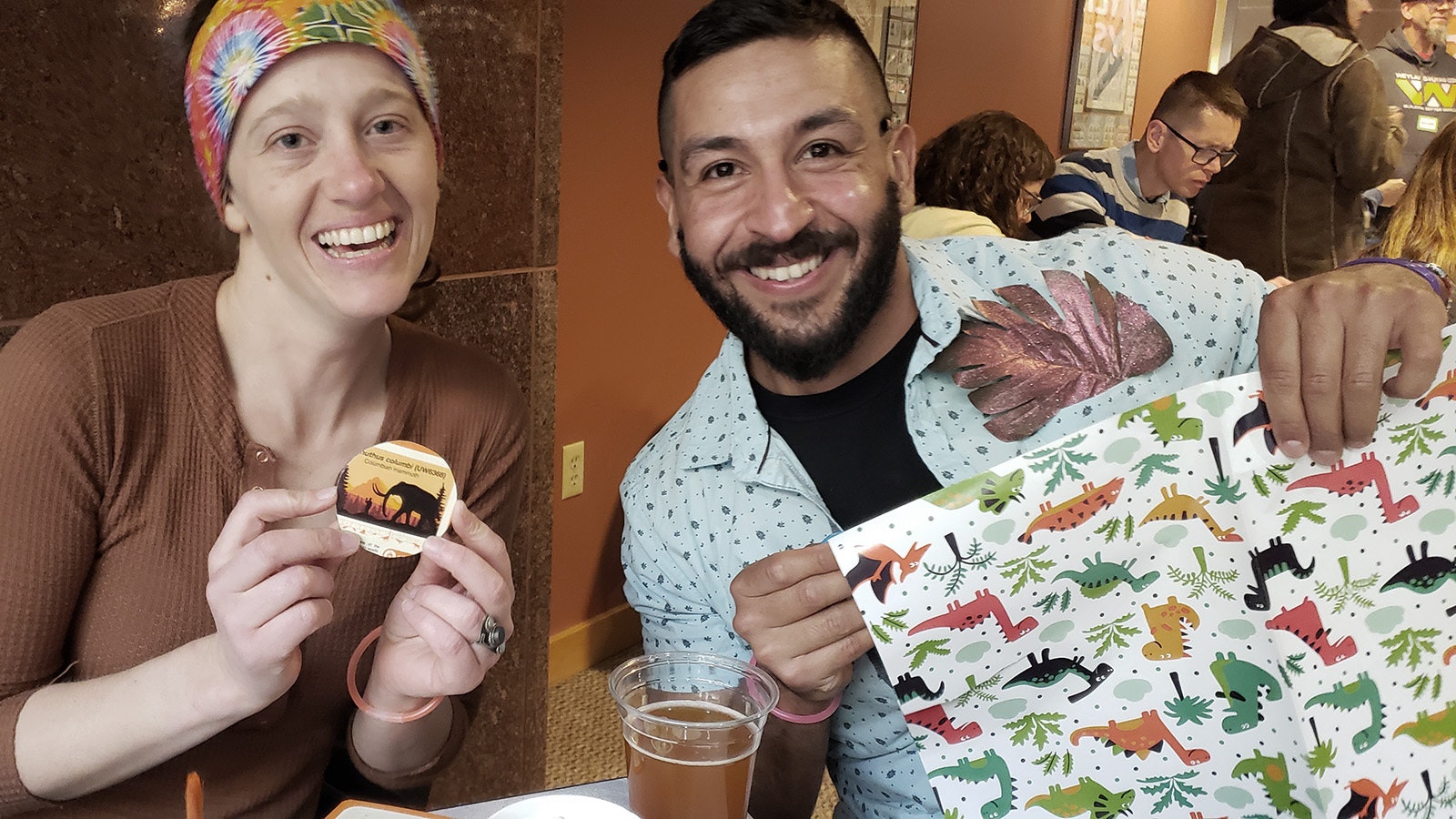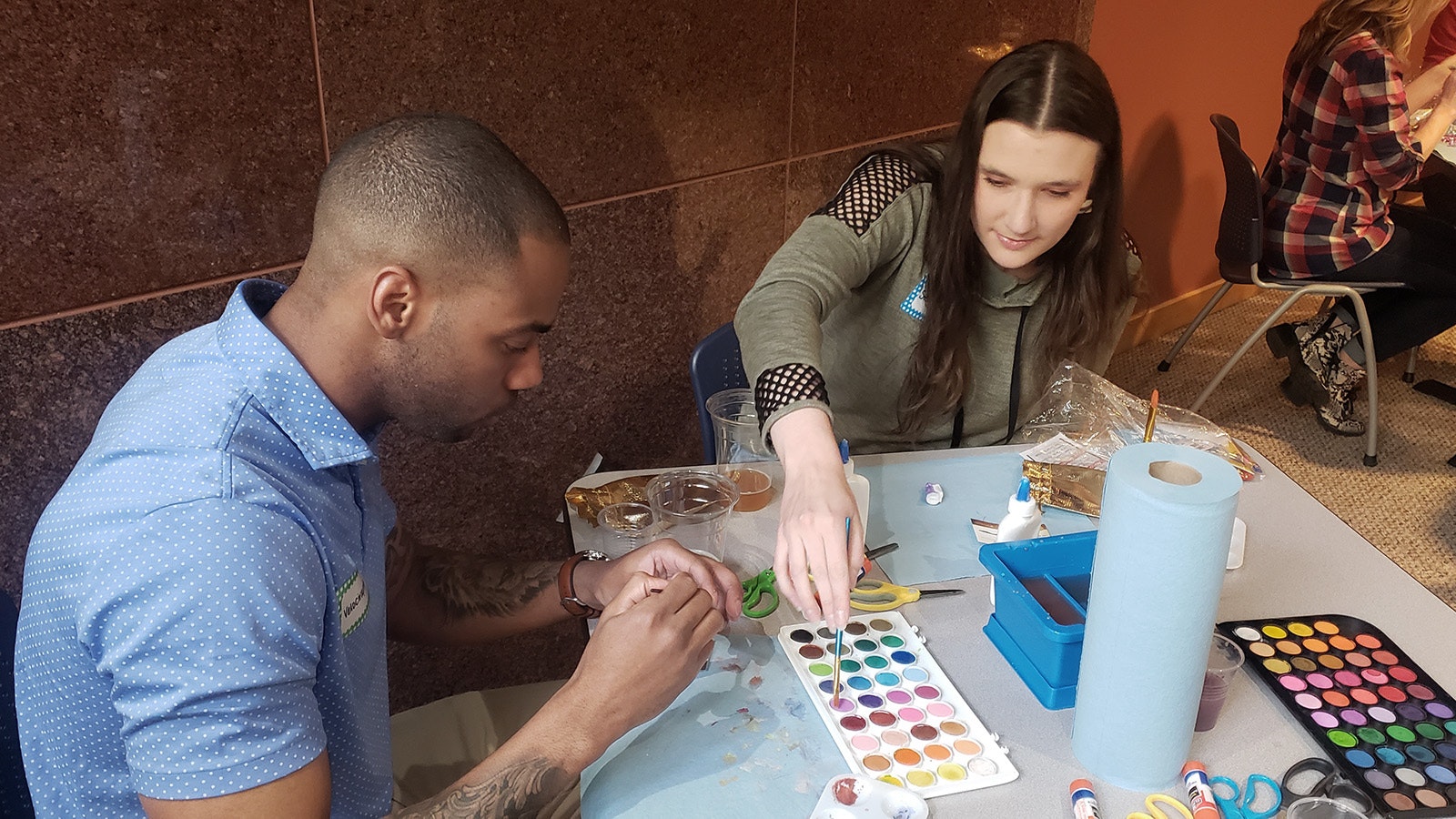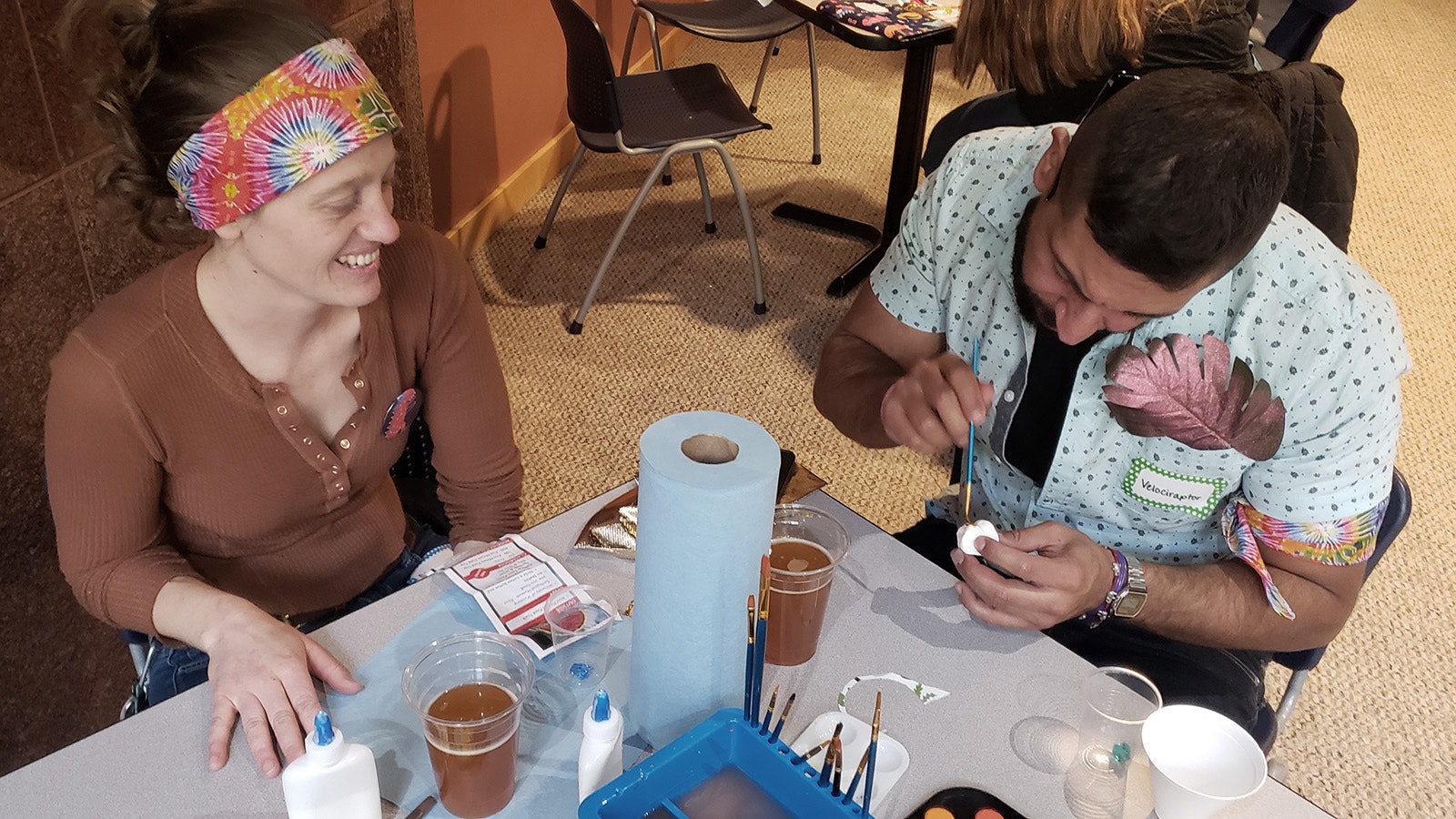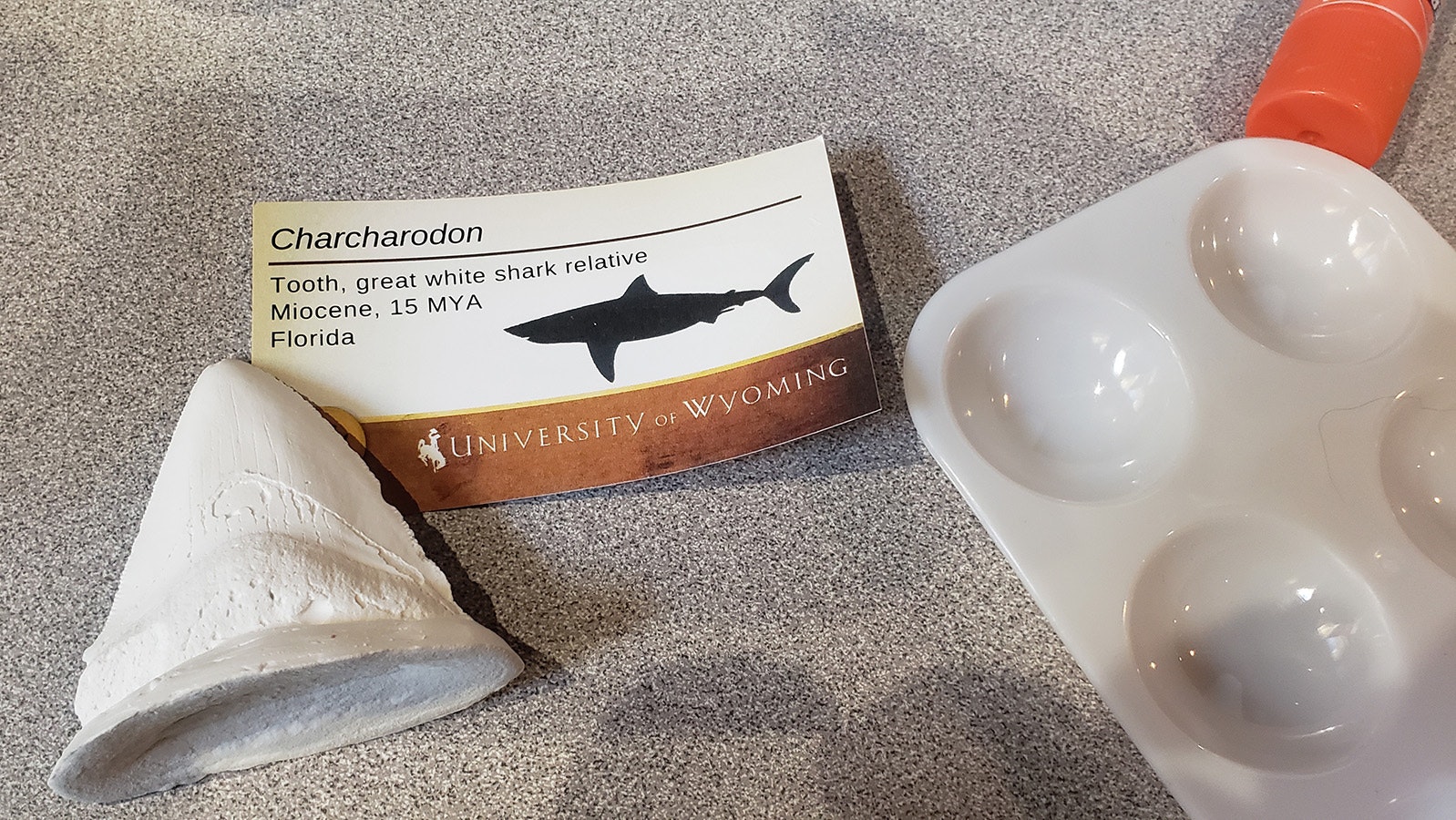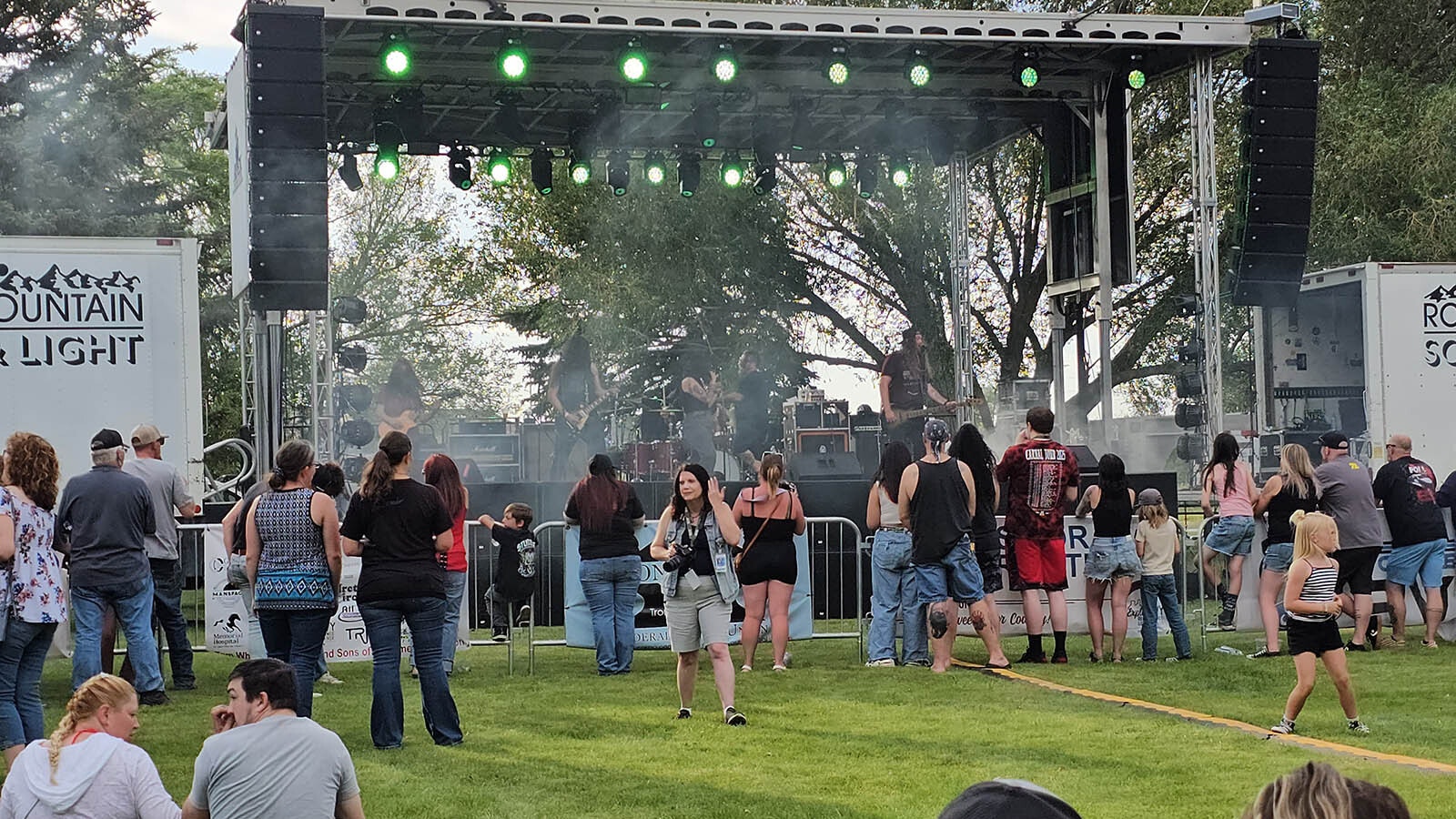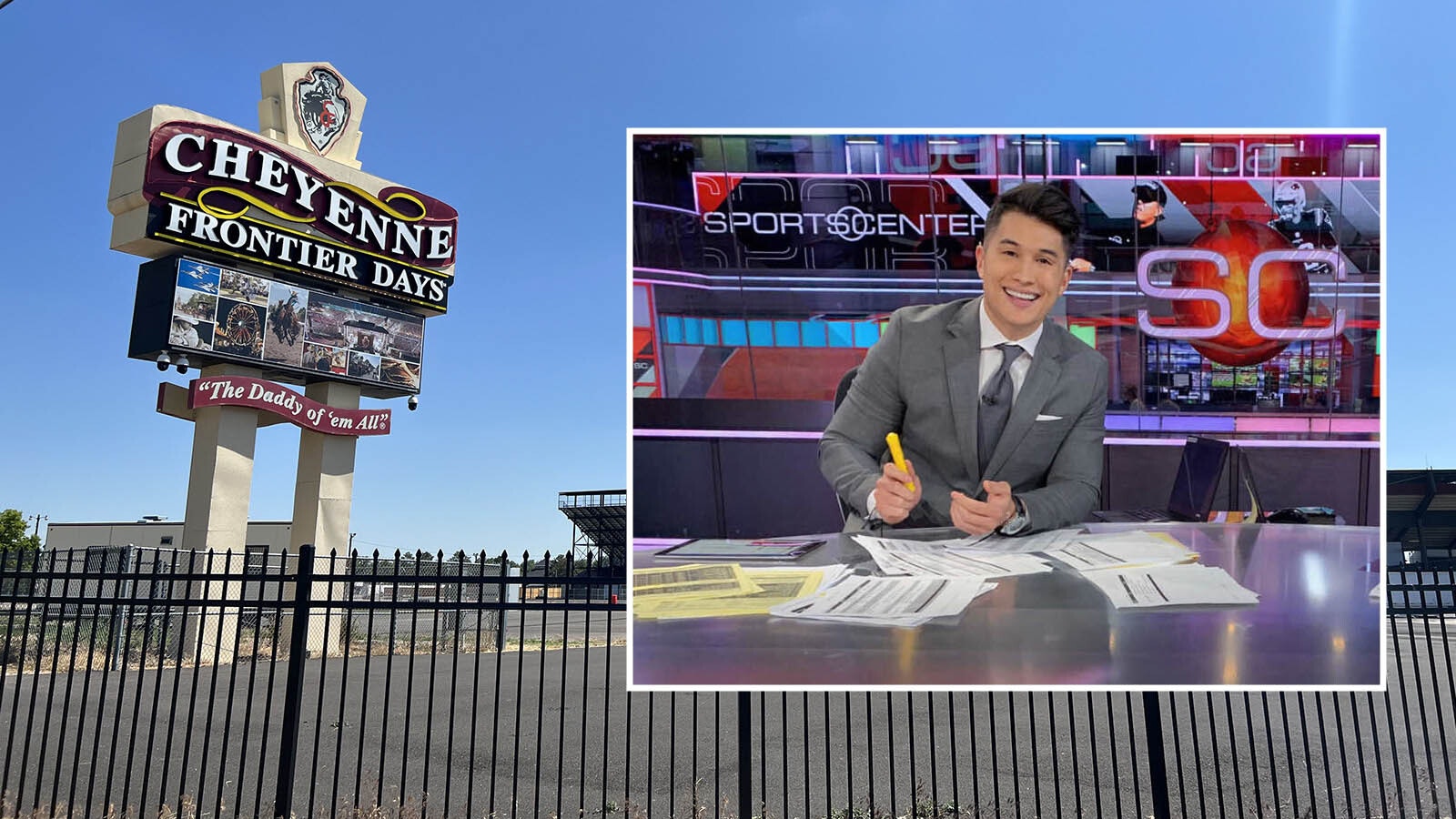It’s OK to party like it’s the Jurassic, even if you’re a Cretaceous kid.
That’s what one Wyoming-born Triceratops discovered last weekend when it became the unofficial star of the Wyoming State Museum’s sold-out, adults-only Jurassic Party.
The recently placed dinosaur exhibit is the new kid on the block at the State Museum. It will be part of a larger exhibit that goes live in late May, but for those who can’t wait, it’s already been placed in its new home. Selfies and sneak peeks are welcome.
Triceratops, of course, is Wyoming’s official dinosaur — not to be confused with its official state fossil, which is a fish, the Knightia.
“We get a lot of requests from our visitors that they’d love to see more dinosaurs,” Wyoming State Museum Director Kevin Ramler told Cowboy State Daily. “It’s one of the things that Wyoming is well-known for, and so, with that in mind, we thought what better dinosaur to go out and try to get than Triceratops?”

Dynamic Duo
The Triceratops on display at the Wyoming State Museum is a replica of one already on display at the Wyoming Dinosaur Center in Thermopolis. That was, in fact, the first large dinosaur on display at the center, said collections manager Levi Shinkle.
The Thermopolis dinosaur is 85% one skeleton that was discovered in Niobrara County near Lusk in the early 1990s. The remaining pieces either came from other Triceratops fossils found near Lusk or were replicated from them, making this a Wyoming born-and-raised dinosaur — albeit one that was a resident about 65 million years ago.
Since the Wyoming State Museum’s Triceratops is a replica, it was not quite as difficult to put together as the original was, Shinkle told Cowboy State Daily.
“When it’s a replica, we can write on the bones or put a number on them,” he said. “Once you put it together, those numbers can’t be seen, but when it’s all apart, you can lay them all out, like this vertebrae is one, that one is five and this one is 10 — so you can get them all lined up.”
Replicas of dinosaur bones are made by wrapping up the real bones in clay, then putting a hard plastic shell over that. Once the cast has dried, it is carefully removed and silicone poured inside, creating a one-to-one replica.
Steel rods are placed inside these replicated bone pieces to connect everything a little more easily than original bones can be put together.
For original bones, a metal cradle is used instead so that the bone is not damaged by being on display.
The head of Triceratops, however, is actually too heavy and has too many pieces to display, Shinkle said. So, the one on display in Thermopolis is actually a cast of the dinosaur’s real skull.
The dinosaur replica in Cheyenne at the museum, meanwhile, is awaiting the lower part of its jaw.
Largest Head Ever
Triceratops had the largest head to body ratio of all the dinosaurs, Museum Education Curator Jeremy Thornbrugh told Cowboy State Daily.
“So, about one-third of their body is their head,” he said. “Imagine if a 6-foot human had a 2-foot-long head. It’d be pretty silly if our head was one-third of the size of our body.”
The 3-foot horn that we see on the Triceratops display, meanwhile, is just the bony part of the animal’s horn. There could be another foot of keratin on top of that, making the entire horn 4 feet long.
Scientists can tell that the horn had a keratin portion by looking at the very tip of the fossilized horn, which resembles similar horns found on bulls and pronghorn. Keratin, being soft tissue, doesn’t fossilize well, so that part of the Triceratops horn has been lost to time.
“Triceratops was an herbivore and they lived in the Cretaceous, especially after the late Cretaceous period,” Thornbrugh said. “They were one of the last dinosaurs to evolve before the asteroid that wiped out the dinosaurs at the end of the Cretaceous.”
More Numerous Than Mice
Triceratops, meanwhile, is a genus name, rather than a species name. It refers to about 17 species that have been identified, including Triceratops horridus and Triceratops prorsus.
Triceratops was one of the most numerous herbivores to ever walk the earth, Thornbrugh said. Their numbers were similar to mice, although that rodent is both a mammal and an omnivore.
“There were just so many of them,” Thornbrugh said.
Triceratops being an herbivore, had teeth stacked a bit like a giant Pez dispenser, Thornbrugh said. That way, new teeth could just pop up and grow as needed if the dinosaur lost a tooth.
The teeth were very sharp, able to slice and chew through shrubbery as though it were salad leaves, not woody stems and brush.
Triceratops was slow, moving at the rate of about 20 miles per hour. It’s not known if Triceratops lived in herds, Thornbrugh said.
“They found some of them together, but there’s not a lot of evidence like some of the other dinosaurs,” he said.

Hard As Nails
The distinguishing feature of Triceratops are the three horns on its face, and the giant frill — about 3 feet across — covering its neck.
“Paleo biologists are still debating what that was used for,” Thornbrugh said. “Was it purely protection? Did it help with determining which species was which? Was it colorful like a peacock’s tail? We don’t have a lot of those answers, but we do know that its entire face, from the tip of their horns up to their frill was covered in keratin, which is basically like the fingernails or your hair. So, their face was basically one giant fingernail.”
Triceratops probably needed that armored face to get along with another denizen of the Cretaceous, Tyrannosaurus rex.
“T.rex 100% ate triceratops,” he said. “That was one of their major predators.”
Thornbrugh has a Tyrannosaurus rex tooth he used during presentations about Triceratops during the museum’s Jurassic Party, which was about the size of a human forearm. T.rex also had a tongue that was 4 feet long, Thornbrugh said, which helps visualize just how big its mouth must have been.
“They definitely could chomp (Triceratops),” he said. “There’s still research out whether the T.rex was more of a predator or scavenger, but most people think that he (spent) at least a good chunk of his time being a predator.”
About the photos:
Top: Jeremy Thornbrugh holds a Tyrannosaurus rex tooth as he talks about Triceratops, both of which lived during the Cretaceous period, during a recent Jurassic party at the Wyoming State Museum.
Gallery: Lenin Del Toro, right, and Cody Zimmerman make buttons during an adults-only Jurassic party at the Wyoming State Museum; Tristan Gauthier, left, and Brooke Jandalderis each paint a cast of a dinosaur fossil; Zimmerman and Del Toro paint casts of dinosaur fossils while enjoying a beer; Cast of a shark tooth ready for painting during the adults-only party.
Bottom: A composite photo from the Jurassic party includes, left, Laura Vietti from the geology museum in Laramie assisting with making buttons; center, a fossil of Archaeopteryx, a forerunner of birds; right, the femur of an Apatosaurus, which used to be called a Brontosaurus.
(All photos by Renée Jean, Cowboy State Daily)


